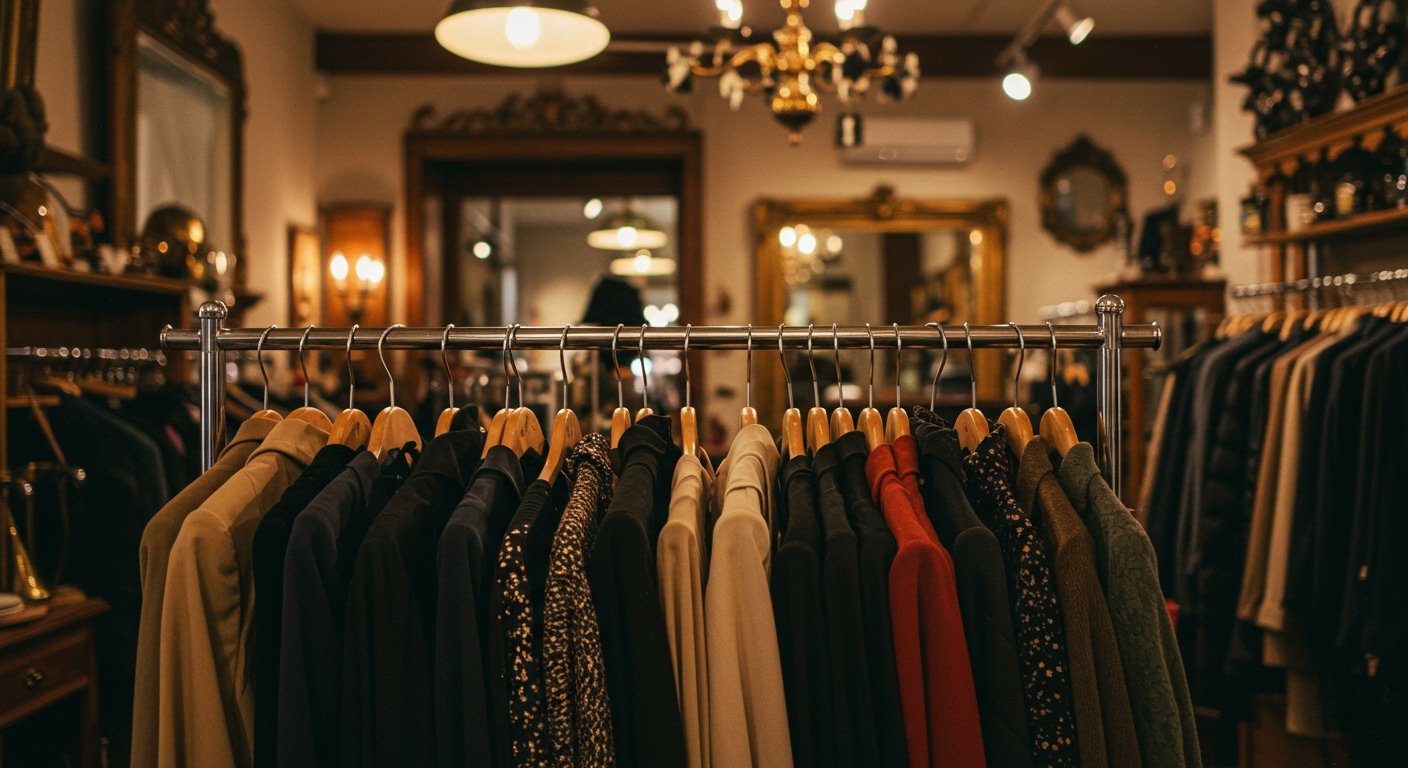PORTLAND, OR – In an era where sustainable fashion and value intersect with a desire for curated style, a Portland-based secondhand store is redefining the retail landscape. Deep Lake, as highlighted in a recent report by Portland Monthly published on June 4, 2025, distinguishes itself by offering a unique blend that marries the welcoming familiarity of “thrift shop comforts” with the allure of “designer glitter.”
Authored by Matthew Trueherz, with accompanying photography by Aaron Lee, the Portland Monthly article delves into what makes Deep Lake more than just another consignment shop. It suggests that the store has successfully cultivated an atmosphere and selection that feels akin to browsing a high-end boutique, while still operating within the secondhand model.
A Curated Collection
The key to Deep Lake’s distinctive appeal, according to the report, lies significantly in its community of consignors. Unlike traditional thrift stores that may accept a wide range of donations, the consignment model allows for a more selective intake process. This community, comprising individuals who are likely attuned to quality, current trends, and desirable labels, contributes items that form the backbone of Deep Lake’s inventory.
This curated approach directly contributes to the “designer glitter” aspect. Shoppers can expect to find higher-quality pieces, potentially including sought-after brands or unique vintage items, that might not typically appear in a general thrift environment. The focus shifts from sifting through vast quantities of varied goods to exploring a more thoughtfully assembled collection.
Blending Comfort and Style
The report notes that Deep Lake manages to balance this elevated selection with the inherent “thrift shop comforts.” This likely refers to the welcoming, accessible nature of a secondhand store, perhaps reflected in its pricing structure relative to new retail, the relaxed shopping environment, or the inherent thrill of discovering a hidden gem. The fusion suggests an environment where the excitement of finding unique, quality pieces is paired with the ease and affordability associated with secondhand shopping.
This blend is crucial to its success. It attracts a diverse clientele, from seasoned thrifters looking for premium finds to consumers new to secondhand shopping who are drawn by the boutique-like presentation and the promise of quality. The store becomes a destination for those seeking sustainable fashion choices without sacrificing style or enduring the potentially overwhelming nature of less curated secondhand venues.
The Role of the Consignor Community
The consignor community is not merely a source of inventory; they are partners in shaping the store’s identity. Their contributions dictate the variety, quality, and style profile of the items available. This symbiotic relationship ensures a steady stream of desirable goods, allowing Deep Lake to maintain its reputation for offering pieces that possess both comfort and a touch of designer appeal.
By relying on this community, Deep Lake fosters a sense of local connection and participation. Consignors benefit from giving their pre-owned items a second life while potentially earning a return, and shoppers benefit from access to a constantly evolving collection of curated goods. This model stands in contrast to the linear consumption cycle of fast fashion, promoting a more circular and sustainable approach to clothing and other goods.
Experiencing the Boutique Feel
While the specific elements contributing to the “boutique” feel are not exhaustively detailed in the summary, they typically involve aspects like store layout, merchandising, lighting, customer service, and the overall presentation of the goods. A boutique often implies a more spacious, organized, and aesthetically pleasing environment compared to the sometimes cluttered nature of traditional thrift stores.
Achieving this elevated atmosphere while stocking secondhand items requires deliberate effort in display and organization. It suggests that Deep Lake invests time and resources in presenting its inventory attractively, making the shopping experience feel more intentional and luxurious, thus justifying the comparison to a high-end boutique.
A Model for Modern Retail?
Deep Lake’s success, as profiled by Portland Monthly, raises questions about the future of retail, particularly within the secondhand market. As consumers become more conscious of sustainability and value, models that offer curated, high-quality used goods in an appealing environment are likely to gain traction. Deep Lake appears to be at the forefront of this trend in Portland, demonstrating that secondhand shopping can indeed be a sophisticated and rewarding experience.
The store serves as a compelling example of how a focus on curation, community engagement through consignment, and thoughtful presentation can transform the perception and reality of secondhand retail, elevating it from a place solely focused on affordability to one that competes on style, quality, and experience.




